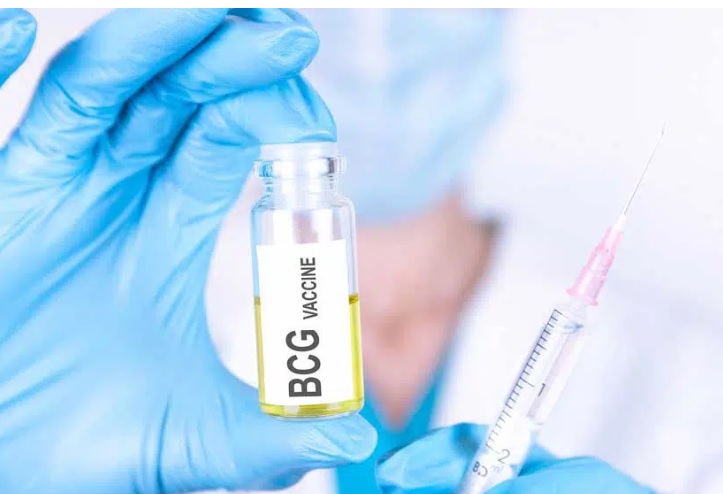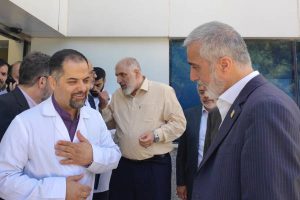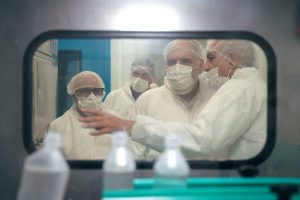
On the occasion of World Tuberculosis Day| Fighting an age-old threat: How standing against tuberculosis
Barkat Health & Pharmaceutical Group: Tuberculosis (TB) is one of the most common and dangerous infectious diseases, and it remains one of the greatest global health threats today. According to the World Health Organization (WHO), approximately one-third of the world’s population is potentially infected with the TB bacteria. This disease, caused by the Mycobacterium tuberculosis bacteria, can lead to severe health consequences for both individuals and communities if not identified and treated promptly. Especially in regions with weak healthcare systems, TB remains a significant public health threat.
In recent years, significant progress has been made in the prevention of TB, including the use of the Bacillus Calmette-Guérin (BCG) vaccine, early detection through screening, and preventive treatment to prevent the activation of latent infections. These measures, particularly in countries with a high TB burden like Iran, can help reduce the incidence of the disease.
BCG Vaccine: First Line of Defense Against Tuberculosis
The BCG vaccine, first developed in 1921 by French researchers Calmette and Guérin, is one of the most effective tools in preventing tuberculosis. This vaccine is particularly impactful in preventing TB meningitis and miliary tuberculosis in infants. In recent years, the BCG vaccine has become a critical preventive strategy in many countries, especially for infants and children under the age of five.
In Iran, the BCG vaccine has been widely administered to all newborns since 1947, significantly reducing the incidence of TB meningitis and severe forms of the disease. However, it should be noted that the BCG vaccine has a lower efficacy in preventing pulmonary tuberculosis and related infections, and supplementary measures are still necessary to control TB in adults.
Screening & Early Diagnosis: Key Tools for TB Prevention
Screening is one of the most effective methods for identifying individuals with active TB or those with latent TB infection. People with latent TB infection do not show any symptoms but can develop active TB over time, particularly if their immune system weakens. Therefore, screening such individuals is of paramount importance.
Various methods for screening include the tuberculin skin test and medical imaging. In the tuberculin skin test, a small amount of tuberculin is injected under the skin, and if the person is infected with TB bacteria, a skin reaction will occur at the injection site. This test is especially useful for identifying latent TB infections in asymptomatic individuals.
X-ray imaging is also critical for detecting lung damage caused by TB. This method is effective in diagnosing pulmonary TB and related tissue damage and can help identify individuals who need treatment.
Preventing Progression of Latent Infection to Active Disease
Latent TB infection means that the bacteria causing the disease are present in the body, but the person shows no signs or symptoms of illness. If individuals with latent TB do not receive preventive treatment, they may develop active TB in the future and transmit the disease to others.
Preventive treatment involves the use of anti-TB medications such as isoniazid for a duration of 6 to 9 months. This treatment is particularly recommended for individuals with a positive tuberculin skin test or those at higher risk for TB. Preventive treatment can help prevent the activation of latent infections and curb the spread of the disease.
In Iran, preventive treatment is widely provided to individuals at high risk or those with latent TB infection. This treatment is particularly used in newborns, children under five, and individuals in close contact with TB patients.
Preventive Measures in Iran
Given the public health situation and the prevalence of infectious diseases, Iran has implemented extensive nationwide programs to prevent tuberculosis. The key preventive measures include the BCG vaccination, thorough screening and early diagnosis, and preventive treatment for individuals at risk.
-
BCG Vaccination for Newborns: From birth, all Iranian infants receive the BCG vaccine. This vaccine is especially effective in preventing severe forms of TB in children.
-
Screening and Identification of Latent Infection: Regular screening is conducted in high-risk groups, including children, diabetics, individuals with HIV, and those in close contact with TB patients. These measures are effective in the early detection of the disease and preventing its spread.
-
Preventive Treatment: Preventive treatment with anti-TB medications, particularly for individuals with latent infections, is a crucial initiative of the Iranian Ministry of Health. These treatments are widely prescribed for individuals at risk of contracting TB.
Challenges, Opportunities in TB Prevention
Despite the significant efforts made toward TB prevention in Iran and worldwide, several challenges remain in the fight against this disease. Some of these challenges include:
-
Drug-Resistant Tuberculosis: In some areas, drug-resistant TB (MDR-TB) has been reported, requiring more complex and prolonged treatments. This puts considerable pressure on healthcare systems.
-
Limited Healthcare Resources in Certain Regions: In some parts of Iran, particularly remote and rural areas, access to adequate healthcare services and anti-TB medications is limited, which can hinder disease control efforts.
-
Social and Cultural Resistance: Misconceptions and incorrect attitudes towards TB may delay diagnosis and treatment, making it harder to control the disease.
However, there are also opportunities to combat TB. The use of advanced technologies in diagnosis and treatment, international collaborations, and increased public awareness are key opportunities that can significantly reduce the incidence and control TB in Iran and globally.
Conclusion
Prevention of tuberculosis is of critical importance in safeguarding public health. Effective measures, such as the BCG vaccination, accurate screening, and preventive treatment, can significantly reduce the spread of the disease and prevent TB-related mortality.
In Iran, through the implementation of public health policies such as universal vaccination and preventive treatment, significant steps have been taken to reduce the TB burden. However, challenges remain, requiring further action and international cooperation. Progress in the fight against TB can only be achieved through increased awareness, access to effective medications, and improvements in healthcare infrastructure.
-
Voice of Life in World of News — Redefining Health Journalism in the Information Age

-
Senior Health Officials & Barkat GD Visit Sobhan Oncology

-
Barkat Group specialized meeting

-
Safa Appointed as Barekat General Director

-
Barekat Health & Pharmaceutical Group at the 10th Iran Pharma Exhibition

-
Ali Safa visits Sobhan Oncology & Sobhan Darou

-
Pirsalehi & Safa visit Saman Daroo 8 Knowledge-based Company

-
Barekat Managing Director Visits Samen Pharmaceutical Company

